SAAF F 51 Mustangs over Korea
War broke out in Korea on 25 June 1950 and on 4 August 1950 the South African government announced its intention to place an all volunteer squadron at the disposal of the UN. On 25 September 1950, 2 Squadron "Flying Cheetahs" sailed for Japan. On arrival at Yokohama the squadron proceeded to Johnson Air Base near Tokyo where they began their conversion and OTU on F-51 D Mustangs supplied by the USAF from ANG Units. The profile photo 10 depicts an aircraft from the North Dakota ANG that was used by 2 Squadron SAAF. The SAAF already had experience with the P-51 Mustang and flew it in combat during WW II (Photo 20). Most of these volunteer pilots had flown the Mustang during WW II. Subsequently, 2 Squadron became part of four squadrons that formed the 18th FBW USAF. Their first combat missions were flown on 19 November 1950.
The SAAF flew with the distinctive Springbok, in the centre of the roundel, introduced when 2 Squadron was sent to Korea. Their role was close air support against enemy positions to soften them up for ground attacks, interdiction against communist logistic and communication lines, providing protective cover for rescue operations, recon flights and to a lesser extent, interception of enemy aircraft. During the southward advance of the Chinese forces these pilots attacked enemy troops, trucks and supplies daily in near zero temperatures. On 30 November the squadron moved further south to K-13 from where they were evacuated further back to K-10, an airfield situated on the edge of a little bay close to the town of Chinhae. This was to be their permanent base for the next two years.
While equipped with Mustangs, the squadron flew 10 373 sorties and out of a total of 95 Mustangs acquired, no fewer than 74 were lost due to enemy action and accidents. Twelve SAAF pilots were killed in action and 30 were MIA and four wounded.
Serviceability in 2 squadron was better than that of the other three USAF squadrons in the 18th FBW. The SAAF ground crew were all volunteers and saw service during WW II, whilst those of the USAF were draftees. USAF Lt. Daniel "Chappie" James Jr. (Photo 6) became great friends with the SAAF pilots and spoke highly of their professionalism and prowess as pilots that never backed down from a fight.
In recognition of their association with the Flying Cheetahs, the OC of 18 FBW issued a policy directive :" that all retreat ceremonies shall be preceded by the introductory bars of the South African national anthem, The Call of South Africa. All personnel will render the honour to this anthem as our own."

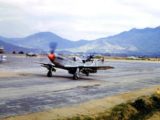
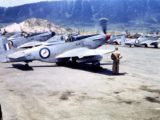
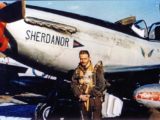
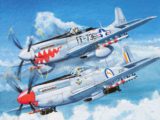
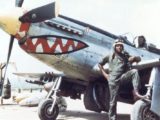
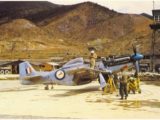
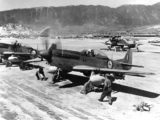
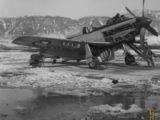
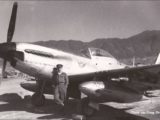
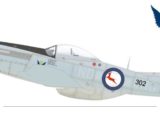
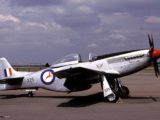

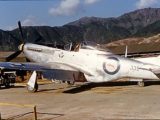
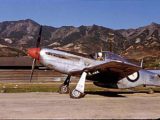
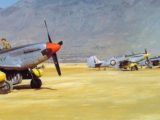
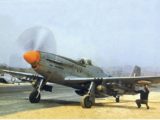
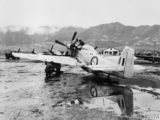
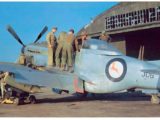
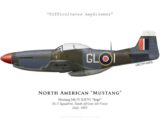
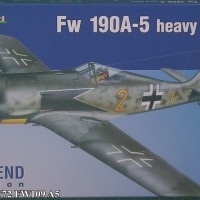
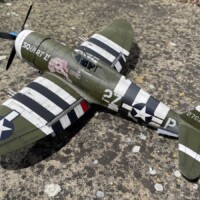
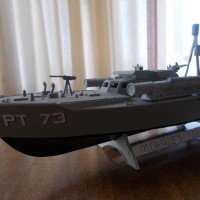

VERY interesting History lesson, Morne! It is important history most Americans have never heard of. Thank you for posting this.
Thanks Jeffry. I think most people tend to forget the scale of the Korean war and how many countries were involved in that conflict. The fact that TWO African nations were involved in the conflict is a little known fact. Ethiopia sent their elite Presidential Guard Unit to serve as ground troops whilst South Africa sent 2 squadron SAAF.
The Swedish field hospital in Pusan was the first non-American hospital sent to Korea. 176 medical and other staff was sent in late August 1950 and was still active in 1957. Love the F-51 in Korea service, thanks for posting the story and photos.
Thanks Stellan. I was not aware of that contribution made by Sweden. I think there are many such facts about that conflict that we know little about.
Sweden is also the only western country with an unbroken presence in North Korea since 70s, acting as a go-between to USA and a number of other countries.
Excellent article Morne. Exceptional and brave pilots as well considering their lost rate.
They all belonged to the greatest generation . A generation that survived WW II.
Wonderful photos Morne - thank-you.
Thanks David. My pleasure!
In the US, they refer to Korea as the forgotten war. I remember it, as a youngster, from the newsreels at the movies and the radio news. One of my neighbors brother went, I remember him visiting them before he left.
Great series of Mustang photos, most of which I've never seen. Folks tend to forget how many nations sent units to help. I wasn't aware about the Swedish hospital, until now. A singularly unglamorous war, not that there are any glamorous ones, except from the perspective of a hundred years later. W.T. Sherman knew of which he spoke.
I think the fact that the war ended in stalemate might have seemed to many that it was a war that the US and her allies had lost or at least gained nothing apart from a divided Korea that is an eduring problem. That, I believe added to it becoming the Forgotton War.
Dunno where you found all these pics, Morne, but I've never seen ANY of 'em...especially the early photo of "Chappie' James -
(who we all know went on to 'bigger and better' things). Thanks very much for sharing the background story AND the photos.
Hi Craig. Chappie was very liked among the SAAF pilots. He and a SAAF pilot Lippy Lipawsky became very good friends. He was usually a guest of honour at the SAAF pilots pub known as Rorke's Inn. He used to call the SAAF pilots His South Afs.
One of the great crimes of the Korean War was the failure to take the 500 P-47Ns that equipped Stateside ANG units and send them to Korea rather than taking the ANG P-51s. I doubt there is an airplane less suited (other than the Spitfire) for close air support. All it takes to knock down a P-51 is a "golden BB" in the radiator, or one of the engine coolant lines. When you consider the 50% loss rate overall of P-51 pilots in the Korean War, it's a blood crime on the part of USAF leadership, deciding the P-51s were "more expendable" because they were cheaper than P-47s.
I fully agree with your assessment Tom. Most of the SAAF Mustangs shot down by ground fire took hits in the vulnerable radiator. Once it started leaking Glycol the pilot knew that bailing out is his only option. One of the veteran SAAF pilots that flew Hawker Typhoons, Albie Gotze, also complained about the Mustang's unsuitability for the CAS
nice pics!
Ditto. nice photos and not usually seen.
Thanks for sharing these photos with us. My Dad was a Korean War combat veteran and he rarely talked about his experiences. He was in the US Army at the Chosin Reservior just north and east of the Marines. Near the end of his life he opened up to me some about what he experienced. He told me that once his unit was overran and practically destroyed by the Chinese that he ended up fighting alongside the Marines at Chosin. He told me stories about how the US Marine Corsairs would be flying overhead with so much ordnance strapped on the wings that they looked like they could barely keep airborne. He "guesstimated " their top speed to be around 250 MPH or so when fully loaded. He then told me that the Corsair pilots were very good with hitting their targets with Napalm. On occasion my dad stated that they would recon some of the ground on top of the ridge lines , that had previously been held by the Chinese and what a horrible sight it was. I can only imagine.
The Mustangs and Corsairs were among my Dads favorite planes too, but his absolutely top pick was the old C-47. He told me that he owed a lot to those pilots and that's all he said about it. Another thing he mentioned was how easy it was for the North Koreans and Chinese to knock a Mustang out of the air. He was kind of sarcastically joking by saying that they (the enemy) could have just thrown a rock at the P-51, and if they hit the coolant system it was done. These pilots knew this. They are all heroes in my book. Thanks again for sharing these amazing pictures with us.
The US Marines / Army stranded at the Frozen Chosin endured what can only be described as hell on Earth! I have seen documentaries on TV showing US Navy Corsairs pound the mountain ridges around Chosin. The Napalm explosions looking spectacular against the snow covered ground. The SAAF pilots excelled in bridge busting and tossing bombs inside railway tunnels. Strafing trains transporting troops and ammunition was also a firm favourite amongst the pilots. However, the zeal with which they flew their missions impressed many in Korea. Two SAAF pilots returning from a CAS mission and running low on fuel had to divert to a Marine base. Upon landing the Marines were inquisitive about the nationality of these UN pilots with their leaping goat insignia on their aircraft, since just a month before, two SAAF pilots had saved that particular Marine unit from a Chinese human wave assault. Safe to say, the party that followed caused both SAAF pilots to only return to their base at Chinhae a day later, Surely bad weather and not a hang over was blamed for their delay to return to base.
A very intersting and informative read, Morne. Thanks for sharing this with all these great photos.
That brings a SAAF Mustang on my want list !
Guten Tag Bernd. That would be great. MAV decals do a comprehensive sheet for SAAF Mustangs.
Yes great stories and pic's Morne, thanks for posting.
Hi Allan. The Aussies also flew the F 51 with great distinction in Korea and then transferred to Gloster Meteors during the latter stages of the conflict. Many of those pilots were also WW II veterans.
Hello Morne,
Indeed, very interesting. Had no knowledge regarding the SAAF in Korea.
I do like the old national insignia better than the new one.
Regards, Dirk / The Netherlands.
Hello Dirk. The Springbok Roundel was specifically adopted for the Korean deployment. Afterwards it was kept as the national insignia being replaced by the more commonly known Castle/ Springbok insignia. After 1994 the insignia changed to a Castle with an Eagle. This was replaced by an African Tribal Village Kraal outline with an Eagle. I still fancy the Castle and Springbok markings.